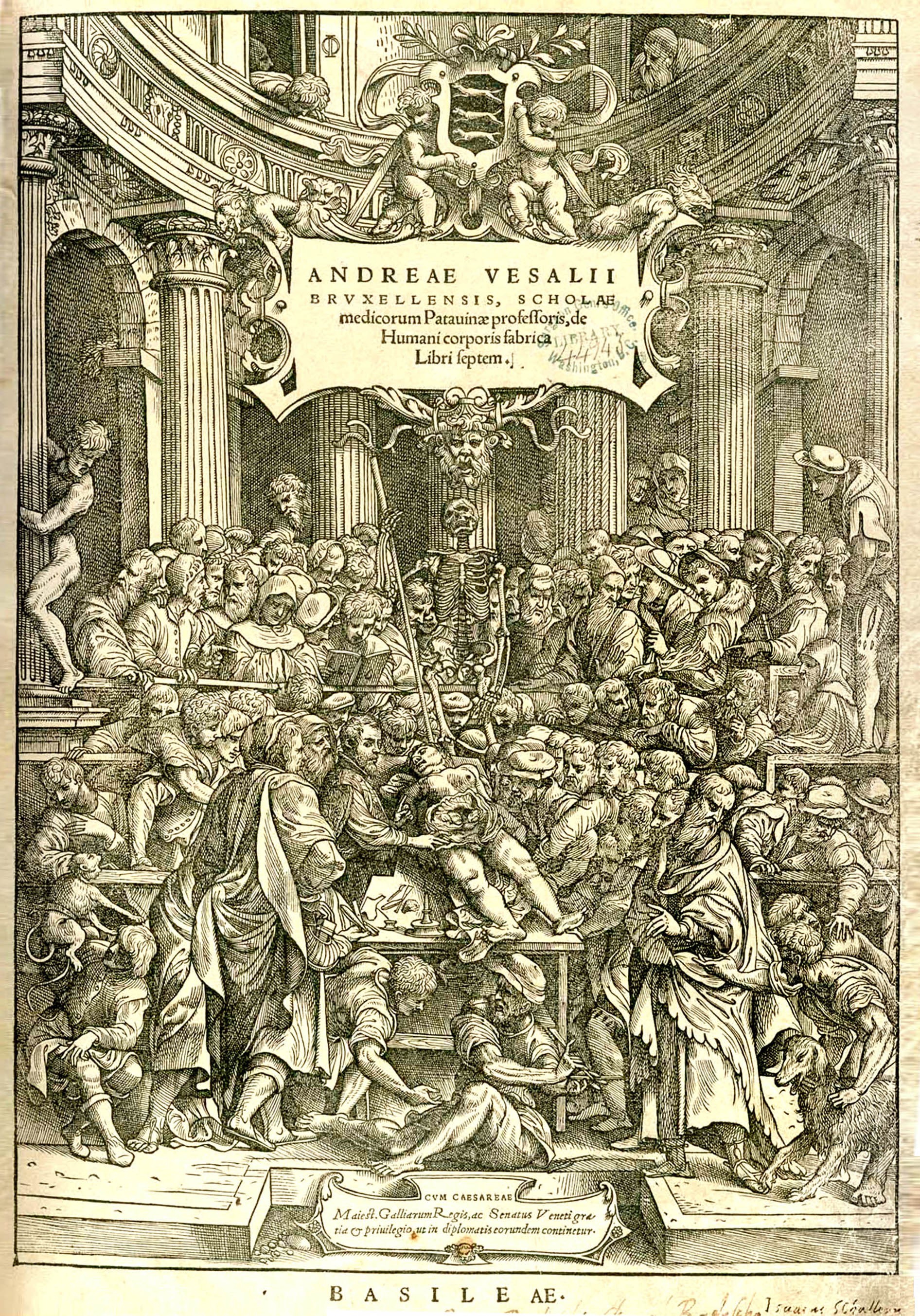By Helen King (W&M Monthly Contributor)

Do you know the ‘Where’s Wally?’ series (in the US and Canada, ‘Where’s Waldo?’)? Readers are faced with a busy scene and are asked to find Wally, distinguished by his red-and-white striped shirt, bobble hat and glasses.
I’m Visiting Professor at the Peninsula Medical and Dental School in Truro, teaching fourth-year medical students about the history of dissection. Last week, we were looking at Vesalius. The title page of his huge book, De humani corporis fabrica (On the Fabric of the Human Body), published in 1543, has perhaps the most famous image in the history of medicine: a crowded scene of people watching a woman being dissected.
My students asked, ‘Where’s Hippocrates?’ Vesalius himself is there, bearded, one hand on the cadaver, his eyes partly on her and partly on us. While we know that dissections in this period in Italy were very popular, attended not just by medical students and physicians but also by the paying public, this picture isn’t entirely giving us a ‘real’ event. One clue is the naked man clinging to the pillar on the left. Is he be the next person to be dissected? Or does he represent one way of looking at the body, namely ‘surface anatomy’? This would make the figure opposite him on the right, showing off his fashionably-slashed doublet and hose, ‘muscular anatomy’.
The other fantasy figures are the larger-than-life ones dressed for a toga party. Two look over Vesalius’s shoulder. The third is apparently speaking to a man who is bringing in a dog. We know that Vesalius did public dissections of dogs if no criminals had been executed. The two closest to Vesalius may be Herophilus and Erastistratus, from third-century BC Alexandria, the only men in the ancient world who regularly worked from human bodies. The man on the other side could be Galen, greatest physician of ancient Rome, in whose work Vesalius said he had found over 200 mistakes. Vesalius also talks of Galen as ‘deceived by his monkeys’, thinking that humans were just like them – can you see the monkey on the far left?
But where is Hippocrates? Surely the ‘Father of Medicine’ should be here to see Vesalius strut his stuff? Or maybe not. Hippocrates is associated with bedside medicine, and healing living bodies, not learning from dead ones. In the controversy over human dissection, maybe Hippocrates just wants to stay well out of it.
For the text of Vesalius, and a useful introductory essay by Professor Vivian Nutton, see http://vesalius.northwestern.edu/
Helen King is Professor of Classical Studies at The Open University, Milton Keynes. Her interests cover the history of the body, gynecology, obstetrics and the classical medical tradition.
